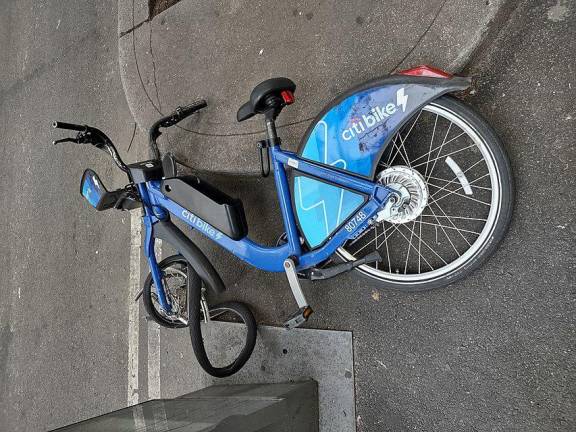Citi Bike ridership soars but inconsistent service ‘raises serious alarm bells’: Comptroller
Citi Bike has consistently fallen below mandated standards, causing service issues that disproportionately impact Black, Latino, and low-income users even as ridership surged to an all time high, according to a new report from the NYC Comptroller.

Earlier this month, the mayor’s office publicized plans to expand the Citi Bike program as 2023 ridership rates have reached all-time highs, breaking annual, monthly, and daily records in just the past three months.
But the bike share service has been plagued with issues ranging from lengthy station outages to unusable bikes, according to a new report from the New York City Comptroller Brand Lander’s office. Moreover, these issues are disproportionately affecting Black, Latino, and low-income communities at the margins of Citi Bike service areas, such as parts of the Bronx, upper Manhattan, and Brooklyn.
The report attributes Citi Bike’s unreliable service to poorer maintenance practices on the part of Lyft, the ride-hailing company that also operates the bike share program. Through analyzing Citi Bike’s monthly performance reports and live data collected through June and July, the comptroller’s office found that the program’s bikes have not been moved frequently enough to ensure even distribution across the system. Each bike was moved an average of just 26 times in 2022, a steep drop from an average of over 100 annual moves per bike from 2014 to 2018, before Lyft acquired the bike share system.
This has caused stations to either stay empty or full for too long, leaving riders with no usable bikes, or nowhere to dock their bikes. In either scenario, the station becomes unavailable for the user’s intended purpose.
These issues were more often encountered by residents of neighborhoods on the outer edges of Citi Bike’s service area in upper Manhattan, the Bronx, Queens, and Brooklyn. In the Bronx, stations remained empty for more than twice as long as stations in Manhattan on average, according to the report’s findings. And of the bikes docked at stations in the Bronx, twice as many were disabled or broken compared to those in other boroughs. For almost all of the stations in the Bronx and upper Manhattan, service is “chronically poor,” says the report.
These underserviced stations tend to be concentrated in neighborhoods with populations that are Black, Latino, and/or low-income, the report notes — groups already affected by transit inequities. While Citi Bike has sought to make the service more accessible to lower income users through membership discounts and price caps, those initiatives aren’t useful if the bikes don’t function.
As Citi Bike becomes an indispensable part of the city’s public transit ecosystem, inconsistent and inequitable service is a pressing concern. “Lyft’s failure to deliver reliable service raises serious alarm bells,” writes the comptroller’s office.
Citi Bike is a public-private partnership: Lyft funds and maintains the program with private money, while the city provides sidewalk space for its stations and the Department of Transportation regulates its operations. Lyft’s contract with the city includes penalties for failures to meet performance standards, but the transportation department has often chosen not to enforce them, according to the report. Should the standards be enforced, the comptroller’s office estimates that Citi Bike would be on the hook for $812,000 in fines for its failures in June and July alone.
Lyft did not respond to our request for comment, though Gothamist reported that Lyft “disputed some of the comptroller’s assertions, saying that bike maintenance has not decreased; suggesting that low ridership in some areas is due to lower population density; and pointing out that Lyft took over the program in December 2018 so that entire year’s data should not be attributed to the company.” A spokesperson for the Department of Transportation did not respond to our request for comment, either.
Lyft is currently embroiled in financial turmoil. In February, its stock was in free-fall; in March, its co-founders resigned; and in April, it laid off over a quarter of its workforce. Rumors of a potential bankruptcy have swirled since, and in July, the Wall Street Journal reported that Lyft was seeking to sell off its Citi Bike fleet or partner with an investor. Though the company’s third-quarter revenues beat expectations, its stock price has continued to fall. This month’s Citi Bike expansion announcement, which includes a plan to double the number of e-bikes in the program’s fleet, comes at a turbulent time for the company.
The comptroller’s report concludes that the city should secure Citi Bike’s future against this volatility. “The potential sale of the system and shifts in the bike and micro mobility market leave Citi Bike in a precarious position,” it says. “If a new operator could step in at any time, the City must act to stabilize the system and ensure better performance outcomes.”
“The potential sale of the system and shifts in the bike and micro mobility market leave Citi Bike in a precarious position.” NYC Comptroller’s Report on Citi Bike